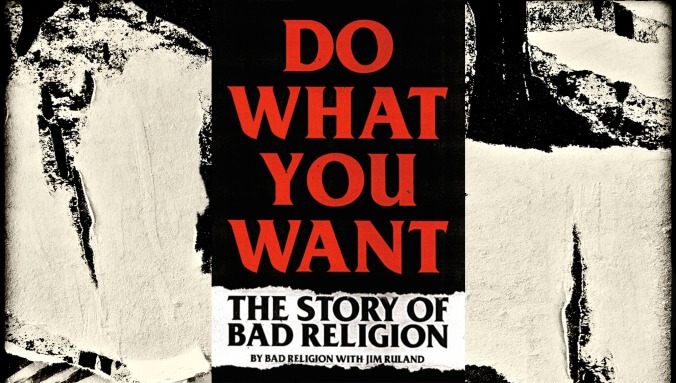Any rock biography worth its salt mixes musical history and juicy personal revelations in equal measure, and Do What You Want is a breezy page-turner that does a respectable job at each. But for an outfit as exacting about its creative process as Bad Religion, it’s surprising to see a band history that jumps around and fudges its own timeline so much. There’s a whole conversation about how No Control, which the band released in 1989, ended up gaining them a ton of new fans thanks to the song “You” being included on the soundtrack for Tony Hawk’s Pro Skater 2, a video game that wasn’t released until 2000—not that you would know it from the book. Guitarist (and Epitaph Records founder) Brett Gurewitz moves out of a tiny studio apartment and into a nice bungalow where he begins the label in earnest—then seemingly moves again, in the very next paragraph. One chapter kicks off by boasting how Bad Religion toured South America at a time when “nobody was going there,” without specifying when that actually was. (Context eventually reveals it was the late ’90s. Presumably the Monsters Of Rock tour, which had been traveling there since 1994, would be surprised to learn it didn’t exist.) The group recounting firing longtime guitarist Greg Hetson remains frustratingly vague. These may be quibbles, but they add up.
Thankfully, there’s plenty of good, meaty drama and behind-the-scenes insight to leaven the messier elements. For a punk band that’s been around as long as Bad Religion has (since 1980), much of the history has already been recounted through interviews over the years, so Ruland wisely leans into the interpersonal elements, getting his subjects to open up about the bonds and fissures between the various members of the band that contributed to the ups and downs of its output. Unsurprisingly, the three longest-running members of Bad Religion—singer-songwriter Greg Graffin, guitarist-songwriter Gurewitz, and bassist Jay Bentley—provide the best insight into what made the group work. And, on occasion, what made it almost grind to a halt. Gurewitz’s drug problems were present from almost the beginning, and the toll it took on both his psyche and his bandmates provides some of the most compelling material. But Bentley also had his demons, as did Gurewitz’s eventual replacement, ex-Minor Threat guitarist Brian Baker, and the degree to which these punk rockers found themselves falling victim to classic rock ’n’ roll excess is a cliché for a reason. Those looking for wild and crazy stories, however, should look elsewhere. These addictions are of the more prosaic and depressing, sit-in-your-room-and-drink-whiskey-all-night variety.
One of Bad Religion’s biggest appeals has always been its literary and intellectual bent, and Do What You Want knows that someone buying a history of Bad Religion also wants to dive into its headier aspects. Ruland delivers: For every description of a song coming together musically, he delves into Graffin and Gurewitz’s inspirations—historical, spiritual, academic, political—in order to show how the band’s ideological framework steered its creative directions. Twenty-first-century records like The Empire Strikes First and True North are revealed to have profoundly divergent thematic beginnings (the former’s conception via opposition to the Iraq War, the latter a deeply personal time of familial tumult for Graffin), despite the consistency of the band’s sound. And no punches are pulled about the group’s weaker releases: Bentley, speaking about his fear the band might’ve broken up following the release of 2000’s mostly lackluster The New America, says, “I was really mad that we might actually end on this fart.” (Also, rock legend Todd Rundgren, who produced the album, sounds like a bit of an asshole.)
While the book certainly delivers on the meat-and-potatoes account of Bad Religion’s rise, wane, then artistic rebirth following Gurewitz rejoining with new drummer Brooks Wackerman, the sometimes inconsistent characterizations and odd structural choices keep it from rising to the levels of excellence its subjects have with their music. But for all the things left unsaid or unaccounted for, what remains is a breezy and enjoyable oral history of being in one of the most respected and enduring punk acts in American history. With such longevity, perhaps another song title would have been even more apropos: “Can’t Stop It.”

